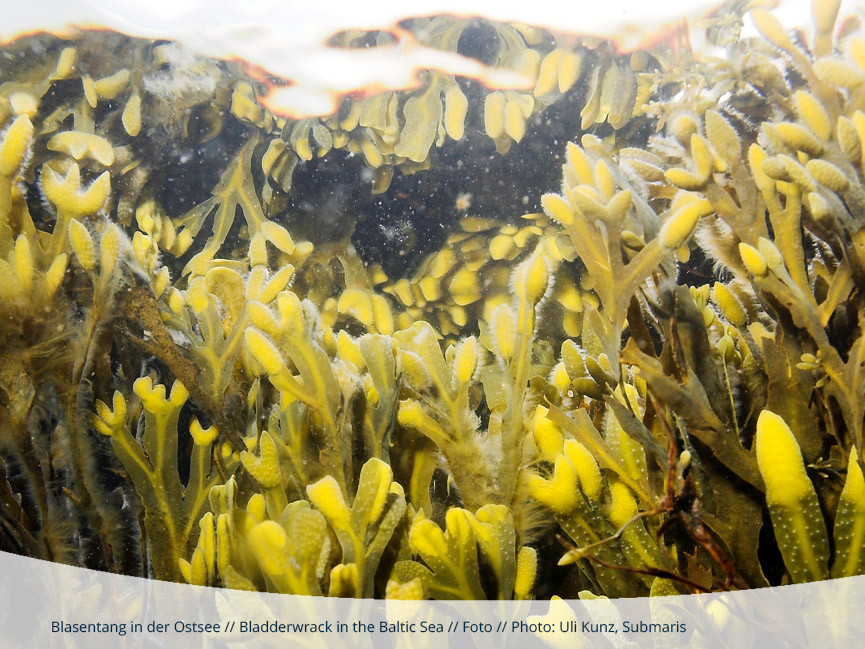
Ecosystem engineer under multiple stress
Case study
On the rocky shores of the Baltic Sea, the bladderwrack Fucus vesiculosus provides a perfect base layer for diverse ecosystems. By colonizing pebbles and rocks along the coasts of the inland sea, bladderwrack creates a home and shelter for small crustaceans, crabs, mussels, sea snails and slugs, algae and even fish. Since the young and brackish Baltic Sea is less rich in species than other marine environments, this ecosystem relies on just a few key players – such as Fucus vesiculosus.
Bladderwrack consumes a substantial part of the nutrients present in the water and contributes significantly to the production of organic matter. In doing so, it drives the Baltic’s biogeochemical cycles. Species interactions within the Fucus community are fine-tuned to keep the system running. If any of its parts were affected by climate change, this would have knock-on effects on both the system and the services it provides to humans.
BIOACID scientists investigated the impact of shifting environmental factors such as an increase in carbon dioxide concentrations, warming and eutrophication – nutrient enrichment – on Fucus communities. They transferred the seaweed together with its associated partners such as smaller species of epiphytes – algae that grow on the Fucus – grazers like tiny crustaceans and periwinkles as well as mussels into large tanks. In a series of seasonal experiments, they exposed the communities to combinations of present and simulated future seawater temperatures and carbon dioxide concentrations. In addition, an increase in nutrient supply was tested.
The results highlight the combined and seasonal effects of the environmental factors. At current water temperatures, an increase in ocean acidification has almost no effect. But warming can become severely stressful – even more so in combination with increasing concentrations of nutrients and in some cases, of carbon dioxide. Particularly during the summer months, biological interactions within the Fucus community can be disrupted: Elevated temperatures weaken the Fucus’ chemical defence against the epiphytic algae, whereas the algae themselves benefit from warming, nutrient enrichment and carbon dioxide. The grazers that naturally feed on the epiphytic algae die from high summer temperatures. Ultimately, the bloom of epiphytic algae released from grazing that is triggered by warming in summer suffocates the foundation species Fucus. The changes in species interactions influence the overall impact of climate change in marine communities.
Eutrophication is one of the oldest environmental problems in the marine biosphere. The Baltic Sea turned eutrophic – or rich in nutrients – in the 1960s and so far, European water management directives have not fully achieved their objective of a good chemical and ecological status. The results of the experiment highlight that local environmental factors such as eutrophication can amplify the effects of global influences such as rising temperatures. Minimizing local stressors might therefore help key species such as Fucus vesiculosus in the Baltic Sea to deal better with with the effects of global climate change and to maintain their important ecosystem services.
Learn more about BIOACID research on Fucus communities in the Baltic Sea in this video portrait of Angelika Graiff.
READ MORE: Case study Is there hope for Lophelia pertusa? // NEXT: Climate regulation – and much more